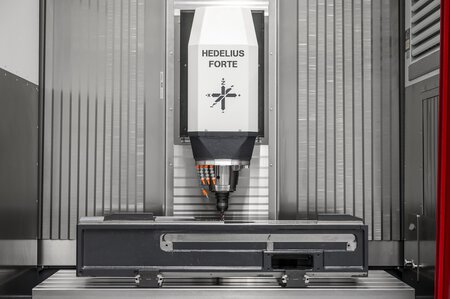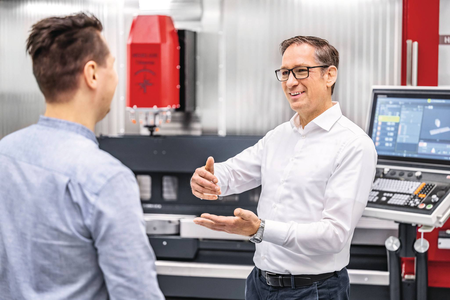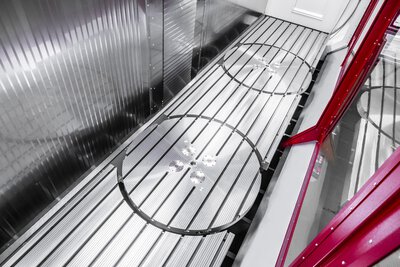19 January 2020
Whirling milling (or trochoidal milling) stands for highly dynamic milling with a high chip volume. Until now, this function was only optimal for slotting. HEIDENHAIN is changing this with a new optional feature for the TNC 640: Optimised Contour Milling (OCM) makes the idea of trochoidal milling available for a much wider range of applications. In addition to roughing open and closed pockets and islands of any shape, OCM also offers cycles for finishing bottoms and side walls.
Like whirling milling, OCM limits the wrap angle and allows milling with the entire cutting edge length. With OCM, the user can programme any contours directly on the TNC 640 in the usual workshop-oriented way. The control automatically calculates the best possible tool paths to ensure that the cutting conditions are constantly maintained. Machining always runs with the optimum cutting values. This not only significantly increases the machining speed - tool wear is also noticeably reduced.

Advantages of vortex milling with OCM.
Less milling pressure for thin-walled components
Higher chip volume
Lower processing time
Better machining of hard materials
Lower heat generation in the component
Lower tool wear
We would be happy to show you the advantages of vortex milling using a practical example in our demonstration centre in Meppen.
More news.

HEDELIUS managing director Dennis Hempelmann presents the outstanding advantages of the FORTE 65 and FORTE 85 machining centres. Thanks to the Operator's platform design, you benefit from maximum dynamics, optimised chip fall and maximum ergonomics. With spacious tool magazines, innovative zero-point clamping technology and intelligent automation solutions, you can sustainably increase your productivity. Experience precision and efficiency at a new level!

How is HEDELIUS meeting the current challenges in European machine tool manufacturing? What role does automation play in this - and what can the industry expect in the future? In this interview, Dennis Hempelmann provides insights into the strategic direction, new machine concepts and the importance of innovation in turbulent times.

Our latest innovation in the video: The TILTENTA 7 NEO, automated with the MARATHON SR415! Experience how our managing director Dennis Hempelmann presents the advantages of this 5-axis universal machining centre with multi-pallet magazine. See for yourself how unutilised potential can be tapped and production processes opened up to a new level of efficiency.












































































































































